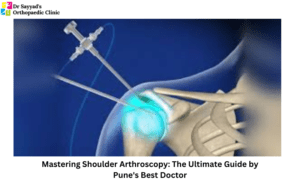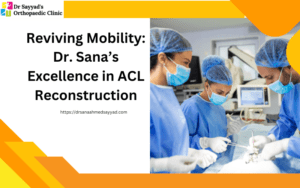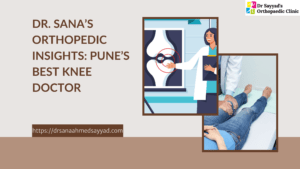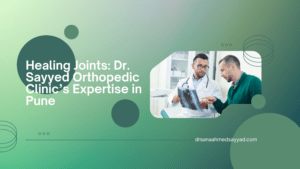Introduction to Shoulder Arthroscopy
Shoulder arthroscopy is a minimally invasive surgical procedure used to diagnose and treat various shoulder conditions. This technique involves using a small camera, known as an arthroscope, which is inserted into the shoulder joint through a small incision. The camera projects images onto a screen, allowing the orthopedic surgeon to see the inside of the shoulder joint and guide surgical instruments to repair or remove damaged tissue. Shoulder arthroscopy is often preferred over traditional open surgery due to its minimally invasive nature, which typically results in less pain and a quicker recovery time.
Indications for Shoulder Arthroscopy
Shoulder arthroscopy is indicated for a variety of shoulder conditions that do not respond to non-surgical treatments such as rest, physical therapy, and medications. Common Indications for Shoulder Arthroscopy include:
- Rotator Cuff Tears: Repairing tears in the tendons that help lift and rotate the arm.
- Shoulder Impingement Syndrome: Removing inflamed or damaged tissue to relieve pain and improve mobility.
- Labral Tears: Repairing tears in the cartilage ring that stabilizes the shoulder joint.
- Shoulder Instability: Tightening loose ligaments to prevent dislocations.
- Bone Spurs or Loose Bodies: Removing bony projections or fragments within the joint.
The Shoulder Arthroscopy Procedure: Step-by-Step
Understanding the steps involved in a shoulder arthroscopy procedure can help demystify the process and alleviate any anxiety patients might have. Here’s a step-by-step overview of The Shoulder Arthroscopy Procedure: Step-by-Step:
- Preparation: The patient is positioned, and the shoulder area is sterilized.
- Incisions: Small incisions, about the size of a buttonhole, are made around the shoulder joint.
- Insertion of Arthroscope: The arthroscope is inserted through one of the incisions, allowing the surgeon to view the inside of the joint.
- Diagnostic Examination: The surgeon examines the joint to identify any damage or abnormalities.
- Surgical Repair: Specialized surgical instruments are inserted through the other incisions to repair or remove damaged tissue.
- Closure: The incisions are closed with sutures or surgical tape, and a bandage is applied.
Common Shoulder Conditions Treated with Arthroscopy
Several shoulder conditions can be effectively treated with arthroscopy. Some of the most common Common Shoulder Conditions Treated with Arthroscopy include:
- Rotator Cuff Injuries: Arthroscopy can be used to repair torn tendons, which are a common source of shoulder pain and dysfunction.
- Labral Tears: These tears in the cartilage that lines the socket of the shoulder joint can be repaired through arthroscopy, restoring stability to the shoulder.
- Shoulder Impingement: By removing inflamed tissue or bone spurs, arthroscopy can alleviate pain and improve shoulder function.
- Shoulder Instability: Arthroscopy can tighten loose ligaments that cause the shoulder to dislocate frequently.
- Arthritis: Although arthroscopy is not a cure for arthritis, it can be used to remove loose cartilage and clean out the joint to reduce pain and improve function.
Latest Research and Technologies in Shoulder Arthroscopy
Advancements in medical technology have significantly improved the effectiveness and outcomes of shoulder arthroscopy. Some of the latest research and technologies include:
- 3D Imaging and Navigation Systems: These technologies provide detailed images of the shoulder joint, allowing for more precise and accurate surgical procedures.
- Biodegradable Implants: Newer implants that dissolve over time eliminate the need for a second surgery to remove hardware, reducing overall recovery time.
- Regenerative Medicine: Techniques such as platelet-rich plasma (PRP) and stem cell therapy are being explored to enhance healing and recovery after arthroscopic surgery.
- Improved Arthroscopic Instruments: Advances in instrument design have made arthroscopic surgery more efficient and less invasive, resulting in shorter surgery times and quicker recoveries.
How These Advancements Could Change Patient Care
The advancements in shoulder arthroscopy are poised to significantly enhance patient care in several ways:
- Reduced Recovery Time: Minimally invasive techniques and improved instruments mean less tissue damage and quicker recovery times.
- Better Outcomes: Enhanced imaging and navigation systems allow for more precise repairs, leading to better surgical outcomes.
- Less Pain and Scarring: Smaller incisions result in less postoperative pain and minimal scarring.
- Fewer Complications: Biodegradable implants and regenerative medicine reduce the risk of complications associated with traditional metal hardware and promote faster healing.
Consulting with Healthcare Providers: The Importance
If you are experiencing shoulder pain or dysfunction that has not responded to conservative treatments, consulting with an experienced orthopedic doctor is crucial. Dr. Sana Sayyad, a renowned orthopedic doctor, is known as the best doctor for shoulder arthroscopy in Pune and specializes in shoulder arthroscopy. Dr. Sayyad can provide expert advice and treatment options tailored to your specific condition.
Consulting with a healthcare provider ensures that you receive an accurate diagnosis and appropriate treatment plan. It is essential to discuss all available options, including the potential benefits and risks of shoulder arthroscopy, to make an informed decision about your care.
Frequently Asked Questions (FAQs) About Shoulder Arthroscopy
What is shoulder arthroscopy?
Shoulder arthroscopy is a minimally invasive surgical procedure used to diagnose and treat various shoulder conditions. It involves inserting a small camera called an arthroscope into the shoulder joint through a small incision, allowing the surgeon to see and treat the joint.
What are the common shoulder conditions treated with arthroscopy?
Common shoulder conditions treated with arthroscopy include rotator cuff tears, shoulder impingement syndrome, labral tears, shoulder instability, and arthritis.
What are the indications for shoulder arthroscopy?
Indications for shoulder arthroscopy include persistent shoulder pain or dysfunction that does not respond to non-surgical treatments such as rest, physical therapy, and medications.
How is the shoulder arthroscopy procedure performed?
The shoulder arthroscopy procedure involves the following steps: preparation and sterilization of the shoulder area, making small incisions, inserting the arthroscope, diagnosing the joint, performing the surgical repair, and closing the incisions with sutures or surgical tape.
What are the benefits of shoulder arthroscopy over traditional open surgery?
Shoulder arthroscopy offers several benefits over traditional open surgery, including smaller incisions, less pain, reduced scarring, shorter recovery times, and fewer complications.
What advancements in shoulder arthroscopy technology should I know about?
Recent advancements in shoulder arthroscopy technology include 3D imaging and navigation systems, biodegradable implants, regenerative medicine techniques such as PRP and stem cell therapy, and improved arthroscopic instruments.
What should I expect during the recovery period after shoulder arthroscopy?
Recovery after shoulder arthroscopy typically involves a period of rest and physical therapy. The exact recovery time can vary depending on the specific procedure and the patient’s overall health, but it is generally shorter than recovery from traditional open surgery.
Why is it important to consult with a healthcare provider before considering shoulder arthroscopy?
Consulting with a healthcare provider, such as Dr. Sana Sayyad, the best doctor for shoulder arthroscopy in Pune, is crucial to ensure an accurate diagnosis and appropriate treatment plan. A qualified orthopedic doctor can provide expert advice on whether shoulder arthroscopy is the right option for your condition and guide you through the treatment process.
Conclusion
Shoulder arthroscopy is a highly effective procedure for diagnosing and treating a variety of shoulder conditions. With the latest advancements in technology and surgical techniques, patients can expect improved outcomes, reduced recovery times, and less postoperative discomfort. If you are considering shoulder arthroscopy, it is vital to consult with a qualified orthopedic doctor, such as Dr. Sana Sayyad, to ensure the best possible care.
By understanding the procedure, indications, and benefits of shoulder arthroscopy, patients can approach their treatment with confidence and a clear understanding of what to expect. Remember, seeking professional medical advice is the first step towards achieving optimal shoulder health and functionality.








